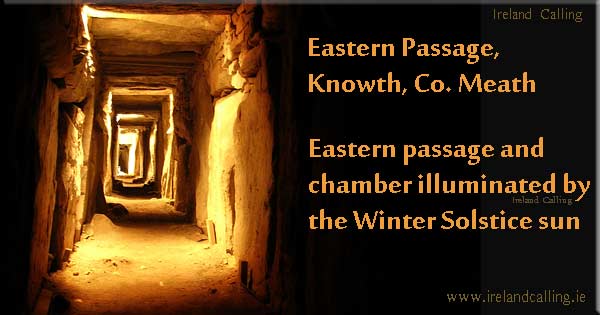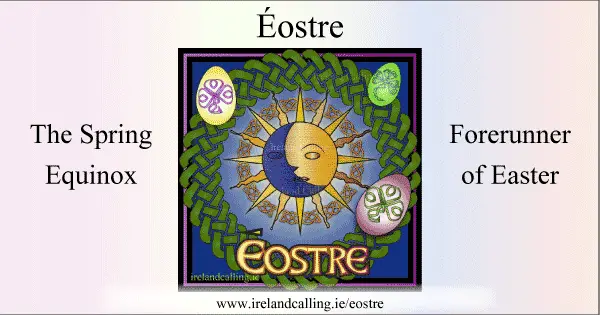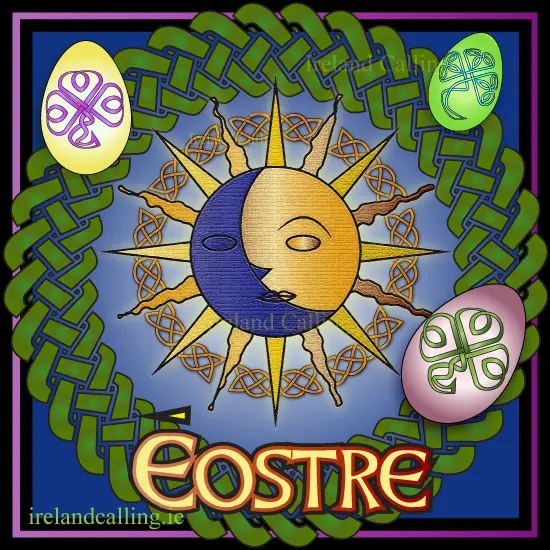Ēostre, Ostara, Eostar
The Spring Equinox is a solar festival celebrating the time when the day and night are of equal length.
It is not known whether there was a name for this festival within Celtic culture but it is believed to be related to the northern goddess Ēostre or Ostara which, in turn, inspired the Christian festival of Easter.
Equinox – of great importance to Neolithic Irish
The Equinox was of great importance to the Neolithic (Stone Age) Irish. Evidence of this can be found in cairn temples at Knowth and Loughcrew. Knowth is one of the largest Neolithic cairne temples with a 100ft passage that lets in the sun to fully light up its chambers on the mornings of the spring and autumn equinox, when day and night are equal.

Ēostre or Ostara was the goddess of spring associated with the festival of the spring equinox. During this time, eggs were used a symbol of rebirth and the beginning of new life and a hare or rabbit was the symbol of the goddess and fertility.
Both these symbols were adopted by Christianity and are still seen today during Easter, together with hot cross buns, another ancient symbol which comes from the baking of sweet buns for an idol.
Religious leaders initially tried to put a stop to this tradition but then adopted the sweet treats. Many churches now even offer sunrise services at Easter, paying homage to the pagan solar festival traditions.
Celtic festivals
Mabon – Celtic celebration of autumn equinox
The Neolithics – first people to leave their mark on Ireland

